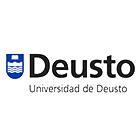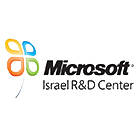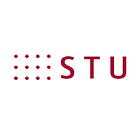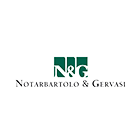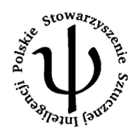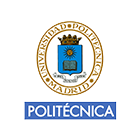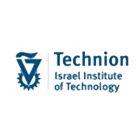Important dates
Camera-Ready Deadline: November 14, 2013
Workshop Day: December 4, 2013
Scope
To alleviate the capacity crunch in mobile networks, emerging wireless technologies aimed to improve spectrum efficiency; network efficiency and energy efficiency are being actively studied and developed in both wireless academia and industry. To succeed, effort is envisioned to come from multiple dimensions including 1) spectrum efficiency enhancement, 2) small cell deployment and 3) novel network architectures. First, advanced multiple antenna technology such as massive multiple-input-multiple output (MIMO), virtual MIMO, full-dimensional MIMO and 3-D beamforming are promising techniques to enhance per-user spectrum efficiency and system capacity. Second, by deploying dense small cells within the local-area range and bringing the network closer to end-users, small cell and heterogeneous networks (HetNets) can potentially improve spectrum resource reuse, spatial resource reuse and communication coverage, thus allowing future mobile networks to achieve higher data rates, while retaining the seamless connectivity and mobility of current mobile network deployments. In addition, from network side, new and novel network architectures such as soft-defined network, cloud-RAN (radio access network) and cognitive radio networks as well as the enabling technologies including virtualization in wireless networks, optical wireless integration, and distributed antenna systems can further improve network efficiency and user experience. The goal of this workshop is to bring together researches which focus on emerging wireless technologies that improve spectrum efficiency, energy efficiency and network efficiency for future mobile networks.
Workshop Organizers
Dr. Meilong Jiang, InterDigital Communications, USA ([email protected] ) Dr. Wei Peng, Tohoku University, Japan ([email protected] ) Dr. Ming Lei, NEC Labs China ([email protected])
Keynote

Hidetoshi KAYAMA
Bio Hidetoshi Kayama received the B.E., M.E. and Ph.D. degrees from Kyoto University in 1987, 1989 and 2004, respectively. He has been with NTT Radio Systems Laboratories since 1989, working on research of packet radio access protocols for cellular and wireless LAN. Since 1998, he was with NTT DoCoMo, Inc., where he engaged in the development of PHS cell station and research of MAC/QoS control for 4G mobile communication systems. Since 2004, he was a director of Innovative Radio Transmission Lab in DOCOMO Beijing Communications Laboratories Co., Ltd. in China, where he engaged in the research about TDD transmission technologies. From 2010 to 2012, he leaded a national research project of cognitive radio technologies which was organized by MIA in Japan. Simultaneously, he was also an invited lecturer of Osaka University, Japan. Now he is the President and CEO of DOCOMO Beijing Labs. He received the Scholarship Encouragement Award in 1995 from IEICE, Distinguished Contributions Award of IEICE-CS in 2013, Best Paper Award of ICT2002, APCC2008, ICCTA2009, and APCC2012 respectively.
Abstract The paradigm shifts caused by smartphones brings large impact on mobile networks. The total amount of mobile data traffic in 2011 was almost double in 2010, and is expected to grow into 500 to 1000 times till 2020. To cope with such a traffic explosion, now mobile operators are facing big challenges. In this presentation, expected scenarios and some key technologies for increasing RAN (Radio Access Network) capacity will be introduced.
Traffic offloading by WiFi is one of an effective way to reduce the traffic burden on mobile network. Currently many mobile operators are actively constructing WiFi hotspots in public places. Thanks to the common frequency band (ISM band) usage, cost of WiFi equipment is very low. While in general, its coverage area is very limited, and almost no mobility is supported in reality. In this sense, WiFi offload seems to be effective in nomadic computing, but not enough to accommodate all mobile traffics. Small cell enhancement based on LTE-A is considered as a promising way to enhance the network capacity. By further exploiting space domain, it is expected to increase network capacity about 7 times than macro-cell systems. In contrast with WiFi, it employs centralized control manners which enable effective mobility support and interference mitigation mechanism between small cells. In addition, interworking with macro cell is also easier than WiFi, thus seamless connectivity with small amount of hand-over signaling can be expected.
From radio access technologies’ points of view, advanced interference mitigation and non-orthogonal multiplexing are likely to be key issues for future systems. Currently 1-cell frequency reuse is used for effective radio resource assignment. In addition, small cells make a distance between a base station and terminals shorter than macro systems. Thus the capacity of RAN can be said as ‘interference limited’. Fortunately, coordinated multi-point transmission (CoMP) mechanism has already applied in LTE-A. By enhancing the CoMP to such a HetNet environment, further improvement of SINR (Signal to Interference and Noise) can be expected.
Non-orthogonal multiple access (NOMA) is investigated as a potential technologies for capacity improvement. It can be regarded as one kind of MUD (Multi-User Detection), but instead of signal spreading, it exploits power difference for signal separation. That is, a strongest signal is detected first, then eliminated it from original signal by applying SIC (Sequential Interference Cancelation) , thus the second stronger signal is detected in the next stage. By an initial performance evaluation, more than 30% improvement in overall cell throughput was observed.







